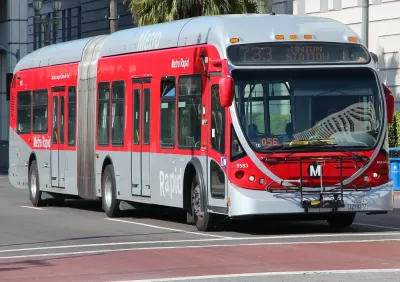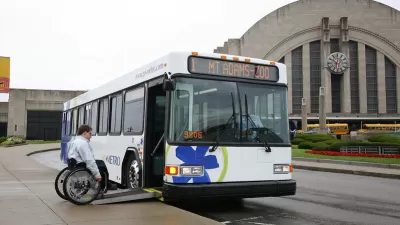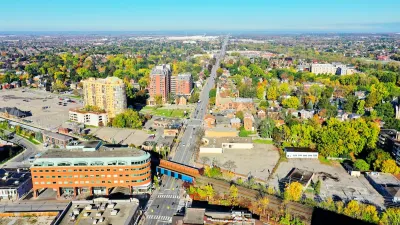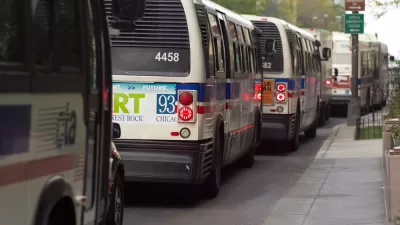Even before the effects fo the coronavirus pandemic drastically reduced ridership, transit riders were declining in cities across the country. The reasons for the downward trend were varied.

Bus ridership started to drop in 2013 in many U.S. cities of all sizes and with different kinds of transit systems. "By late 2019, through nearly seven straight years of decline, national bus ridership in America was at its lowest level since the mid-1970s, a trend that has left service already weakened as transit agencies brace for a public health crisis," write Emily Badger and Quoctrung Bui.
This trend is the result of a variety of factors, say Badger and Bui, including the rise of alternative transportation modes, demographic shifts, and changes in work and commute patterns.
Some factors are under the control of transit agencies—service and infrastructure expansions or cuts, for example. But other factors are related to broader social and economic trends that affect bus ridership over the long term, such as suburbanization, online commerce, and immigration.
"Agencies [also] don’t control all the infrastructure and subsidies that help transit’s biggest competitor, the car. Past research has suggested that transit riders are even more sensitive to changes in gas prices than they are to changes in transit fares. Recently gas has been cheap, and interest rates on auto loans low," note Badger and Bui.
FULL STORY: The Mystery of the Missing Bus Riders

Trump Administration Could Effectively End Housing Voucher Program
Federal officials are eyeing major cuts to the Section 8 program that helps millions of low-income households pay rent.

Planetizen Federal Action Tracker
A weekly monitor of how Trump’s orders and actions are impacting planners and planning in America.

Ken Jennings Launches Transit Web Series
The Jeopardy champ wants you to ride public transit.

Washington Legislature Passes Rent Increase Cap
A bill that caps rent increases at 7 percent plus inflation is headed to the governor’s desk.

From Planning to Action: How LA County Is Rethinking Climate Resilience
Chief Sustainability Officer Rita Kampalath outlines the County’s shift from planning to implementation in its climate resilience efforts, emphasizing cross-departmental coordination, updated recovery strategies, and the need for flexible funding.

New Mexico Aging Department Commits to Helping Seniors Age ‘In Place’ and ‘Autonomously’ in New Draft Plan
As New Mexico’s population of seniors continues to grow, the state’s aging department is proposing expanded initiatives to help seniors maintain their autonomy while also supporting family caregivers.
Urban Design for Planners 1: Software Tools
This six-course series explores essential urban design concepts using open source software and equips planners with the tools they need to participate fully in the urban design process.
Planning for Universal Design
Learn the tools for implementing Universal Design in planning regulations.
Heyer Gruel & Associates PA
Ada County Highway District
Institute for Housing and Urban Development Studies (IHS)
City of Grandview
Harvard GSD Executive Education
Toledo-Lucas County Plan Commissions
Salt Lake City
NYU Wagner Graduate School of Public Service





























